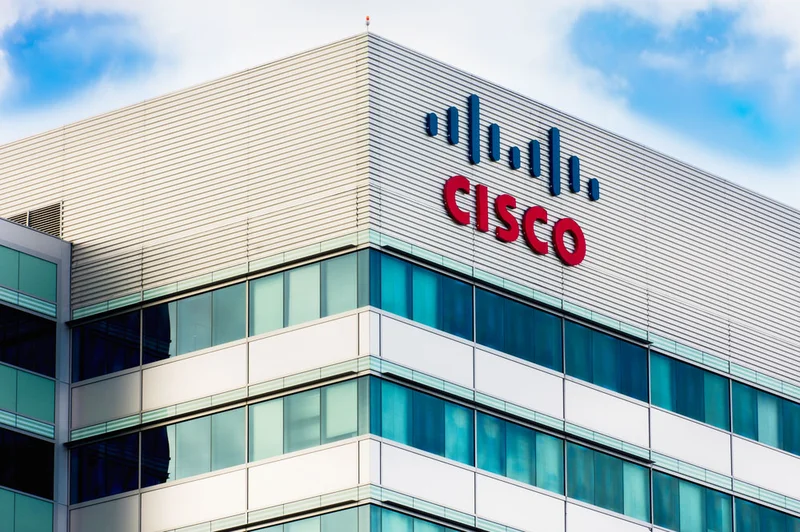Real-Time BNB Signal Analytics
Real-Time BNB Signal Analytics
Cisco, the networking behemoth, just dropped its Q1 FY26 numbers, and if you just glanced at the headlines, you’d think it was nothing but blue skies. The company reported better-than-expected profit and revenue for the period ending October 25, 2025, sending the stock (CSCO) up over 7% in extended trading. On the surface, it’s a feel-good story: revenue hit $14.9 billion, an 8% year-over-year jump, besting estimates of $14.77 billion. Adjusted EPS clocked in at a neat $1.00, up 10% from last year, topping the 98-cent average. Even their guidance for Q2 FY26 and the full fiscal year FY26 looks robust, surpassing analyst expectations across the board.
But as I always say, the devil, or in this case, the underlying truth, is in the details. These aren't just numbers; they're the pulse of a company trying to navigate a rapidly evolving tech landscape. Cisco's stock is already up 25% this year, outpacing the Nasdaq's 21% gain. This isn't entirely surprising; the widespread enthusiasm for AI has been a massive tailwind, fueling hyperscale cloud investments and general IT infrastructure financing. Cisco's management, particularly CEO Chuck Robbins, has been actively positioning the company squarely in the middle of this AI boom. Just last month, they rolled out a new Ethernet switch leveraging Nvidia silicon, a clear strategic play. It seems to be working, at least in some areas. AI infrastructure orders from "hyperscaler customers" alone totaled a staggering $1.3 billion in Q1 FY26. That's not just growth; that's an acceleration that would make a drag racer blush.
When we peel back the layers of this earnings report, the narrative becomes a bit more nuanced. Yes, the overall numbers look strong, but it’s crucial to see where that strength is coming from. The networking business, Cisco’s traditional bread and butter, is absolutely crushing it. Sales climbed a significant 15% to $7.77 billion, easily exceeding analyst expectations. This isn't just a fluke either; product orders were up 13% year-over-year, marking the fifth consecutive quarter of double-digit growth in Networking product orders. CFO Mark Patterson even highlighted a "multi-year, multi-billion-dollar campus refresh opportunity starting to ramp," suggesting strong demand for refreshed networking products and a quick uptake of next-gen solutions like WiFi 7. This is the engine of the Cisco machine, roaring along, fueled by enterprise upgrades and the insatiable demand for robust infrastructure to support modern workloads—especially AI.
However, not all parts of the machine are firing on all cylinders. The security unit, a segment that should theoretically be thriving in an increasingly interconnected and threat-laden world, saw sales fall 2% to $1.98 billion, missing estimates. Collaboration sales also slipped 3% to $1.06 billion, trailing expectations. This discrepancy is a red flag. While the market is celebrating the AI-driven networking surge, it seems Cisco is struggling to maintain momentum in other critical areas. It's like a finely tuned orchestra where the brass section is phenomenal, but the strings are playing out of tune.

This brings me to a crucial question: how much of Cisco's current success is genuinely driven by internal innovation and market share gains, and how much is simply a consequence of being in the right place at the right time, riding the massive wave of AI infrastructure spending? I've looked at hundreds of these filings, and this particular footnote about hyperscaler AI orders is a potent indicator of market momentum, but it also highlights a potential over-reliance. What happens if the hyperscaler investment cycle slows, or if competitors—smaller, more agile players—start chipping away at that lucrative AI infrastructure pie? Cisco has managed to record revenue growth for four straight quarters now, a welcome turnaround after a previous stretch of four consecutive year-over-year revenue declines attributed to economic uncertainty and delayed government spending. But past performance, even recent past performance, isn't a guarantee of future trajectory. The acquisition of Aura Asset Intelligence from Discovered Intelligence in Q1 FY26 is a move, but it's a small note in the grand symphony of these numbers.
The narrative Cisco is pushing, and frankly, what the market is buying, is that they are integrating deeply with the AI boom. And they are, no doubt. But the underlying question for an analyst like me is about diversification and resilience. If the AI infrastructure orders are the primary driver of this impressive networking growth, what's the strategy for the segments that are actively contracting? A 2% drop in security sales isn't just a rounding error; it’s a signal that something isn't quite resonating with customers, especially when cybersecurity threats are escalating daily. To be more exact, a $40 million shortfall against a nearly $2 billion segment is a significant miss.
This isn't to say Cisco is in trouble. Far from it. They’re a cash-generating machine, returning $3.6 billion to stockholders in Q1 FY26 through buybacks and dividends (including repurchasing approximately 29 million shares for $2.0 billion), with a hefty $12.2 billion still authorized for repurchases. They know how to manage their capital. But the long-term health of a technology giant isn't just about managing capital; it's about sustained, diversified growth. Are they investing enough in these lagging segments to turn them around, or are they content to let the AI-driven networking segment carry the bulk of the weight? It’s a classic case of a rising tide lifting most boats, but some are still taking on water.